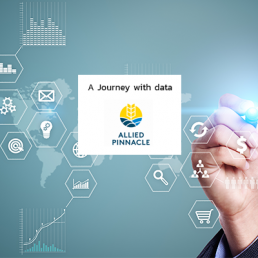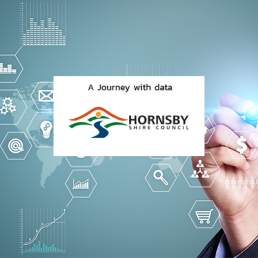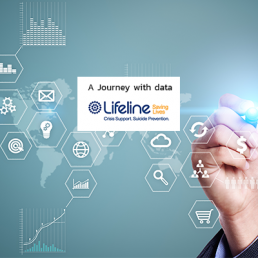Data strategies are changing, watch out for the don’ts
Over the years, I must have been involved in over 50 strategies, a big proportion of these were data and analytics strategies. Most of our customers called them BI strategies, but some referred to them as information management or data management strategies. Either way, I have learnt a lot in my journey with data.
Last week I had the opportunity to interview 7 of our customers and 2 executives from Microsoft about the changing nature of data and its role in digital transformation. We’ll release those videos in coming weeks. The major themes in the interviews were validating for me in terms of our company’s areas of development and, in particular, how Data Addiction helps our customers to establish and govern data initiatives.
The strategies I have been most proud of were the ones that had a high level of business engagement and there was a compelling business case to do something immediately. I know that’s an obvious statement, yet I’ve seen more customers than I care to remember get this so wrong.
So, I thought I’d write up a few things I have seen that go wrong with data strategies.
Don’t get side-tracked on one specific solution, you will miss the big picture
We’ve all met that stakeholder that loves to dominate the workshops and get their way. Don’t get me wrong, passion is great in strategies! We are always trying to find the set of champions, even just one, that will truly drive the first delivery project and focus the team on the things that matter. They are the ones that don’t have the time or patience to wait for beautiful PowerPoint slides and endless governance. They are also the ones that save the teams time during the delivery process and make sure they are focused on the things that really matter. We love these stakeholders because they tell great stories about how they’ve saved time, improved efficiency, reduced risk, improved understanding of their customer and revenue.
But, going down rabbit holes is never, and will never be, a recipe for success in any type of strategy. Don’t get side-tracked with a great idea or a bossy stakeholder. Equally, if an initiative feels right, don’t demean your stakeholders by telling them that its strategy and they have to wait until the PowerPoint is finished. If the business need something that is high value and urgent, it should be prioritised and initiated as soon as funding can be secured. This doesn’t have to happen after the strategy, it can happen concurrently – the right executives will make this happen if we let them know the value!
Don’t forget to show something tangible
I’m not saying that a great roadmap and list of business initiatives is a bad idea. Its necessary, but its not sufficient. The strategies that I have been a part of that got the fastest traction are when we’ve met a stakeholder who just wants to get on with things. This might sound overly simple for the techies, but a simple Power BI dashboard that gets data from 2 data sources that helps reduce the time and monotony of a tragic manual process can win a stakeholders heart and mind; a simple algorithm that goes a step forward in predicting churn for even one customer segment can get the creatively flowing.
We were lucky to be a part of a data strategy recently where we interviewed the head of an operations function for a manufacturer. He told us about the amount of waste that was occurring in his factories. They were making too much stock of some items in some locations and not enough of others. In just a few weeks, we had looked at the data and created a number of algorithms that predicted demand more accurately. We then were able to highlight work orders that were scheduled and didn’t need to be. Sounds simple right? Funny thing is, it was… really simple. He loved it. His CFO loved it even more.
That all happened because he was, and still is, a great stakeholder who wants to get things done. In his words, its all about ‘no mucking around’.
Don’t focus is on activities, its about value
People need to get the right information, at the right time, and in a way that makes sense for them. Sometimes I’ve seen this reduce to a massive list of reports. In my experience, some of the reports have definite value, but most become a laundry list of things they might use one day. Maybe the stakeholder is anxious that this is their only chance to ask for stuff, who knows…. No matter what the motive, a data strategy can’t be focused on reports. The reality is that reports will change as people mature and get to understand what they really need over time. The focus has to be on:
- What do you do today that works?
Its natural for consultants to concentrate on the new world and what is possible with the new tech. Who can blame them? It’s why they became consultants in the first place. It also gives the individual the chance to be creative, innovative and do what they can to deliver break through value. Their confidence also comes from the high maturity of Data and AI software available and the ‘as a service’ availability of products in the cloud. Throwing out everything and starting again is not smart and, if the new solution doesn’t at least do what the current one does, then it has failed. - What do you do today that ‘kind of’ works?
There are always those things that people use that ‘mostly’ work, and need some improvement. People might need to have data updated a few times during the day rather than overnight, for example. A new data source they have been using might make the world of difference to them if its merged with another data source that they have used for a long time. Whatever the case may be, sometimes a few tweaks with some smart people can make a huge impact and, in many cases, it doesn’t have to be after a new platform has been selected and built. - Forgetting what you do today, what do you really need to do your role better?
Often, I have seen people inadvertently constrain solutions to what they think its possible. I don’t think they mean it, it’s more likely because they think they understand the technology and they may not. Deliberately and consciously making a decision to forget about the tech and focus on what data is really needed to make a step change in the way they serve their customers and their customer’s customer is critical. Sometimes this is difficult, but there are a lot of UX and design thinking principles that are built for this scenario. - If you had it, what would you do differently and how would you measure the value?
For me, this is the difference between investing in initiatives that are interesting and initiatives that are valuable. Mapping the stakeholders current journey and what the journey will be like after the new initiative productionised can help prioritise what to do next.
Don’t just focus on back end integration, software tools and architectures
This is the dinosaur complex. Sometimes business stakeholders are difficult, I get it. People are sometimes difficult for unknown reasons. I’ve been a part of a lot of strategies which set out to engage the various parts of the business, but because of availability, territory wars or difficult individuals, they retreat to an ‘IT comfort zone’. This is the danger zone where the strategy becomes more about the technical and security aspects of the new solution and not about the people who can benefit from it. I’m not saying that these elements are not needed, just that they should play a back seat role to the reason we are doing this in the first place – business value. Unfortunately, tool selections and conversations about integration patterns and architecture can very easily derail the focus of a data strategy.
Don’t make it about just you, make it about your customer
The best experiences I have had is when customers think first and foremost about their customers and their customers customers. After we have thought about our role and how we could be more awesome, it’s time to concentrate on what our customers think of us and how awesome we could be.
My experience is when we focus the value conversation on our immediate stakeholders, the return on investment tends to be related to efficiency and cost reduction. My experience is that higher order value comes when we focus on our customers and what experience we want them to have when they interact with us.

Ben Johnson
Managing Director
Data Addiction
Recent Blog Posts
Customer Insights as game-changer in the business of digital transformation
6 April 2021
With Dynamics 365 Customer Insights deployed, The Y NSW’s sales team now has organised customer and prospect information. They can see the source of…
Data is a given…. so is starting with the business problem
15 June 2020
Data is a given, so spend time with the business problem you’re trying to solve. Learn more how we collaborated with Real Pet Food Company in this…
Targeting disruptive business opportunities
26 May 2020
John Khoury Group CIO at Allied Pinnacle talks about targeting disruptive business opportunities and moving away from long roadmaps.
How solid is your data estate?
8 May 2020
Recommendations from the field on building rock solid date estates
Taking data to the front line to enable decision making
5 May 2020
Sharon Bowman ICT Manager has taken data to the frontline. Hear more about how Hornsby Shire Council is leading the charge on enable the right people…
Legacy systems migration and the security the data estate provides
27 April 2020
Legacy system migration, particularly from on-prem has become a lighting-fast reality for many customer check out Matt Clarkin, Business Application…
Embracing the evolution of data channels
15 April 2020
Its times like this that make us realise how imperative crisis support is. Check out our interview with Lifeline’s Head of Architecture and Insights…
The “culture of data” and getting collaborative with digital tools
6 April 2020
Getting collaborative with digital tools is the new norm. In this video we sit down with Tim Reid, Head of IT APAC @ Campari and discuss data as a…









